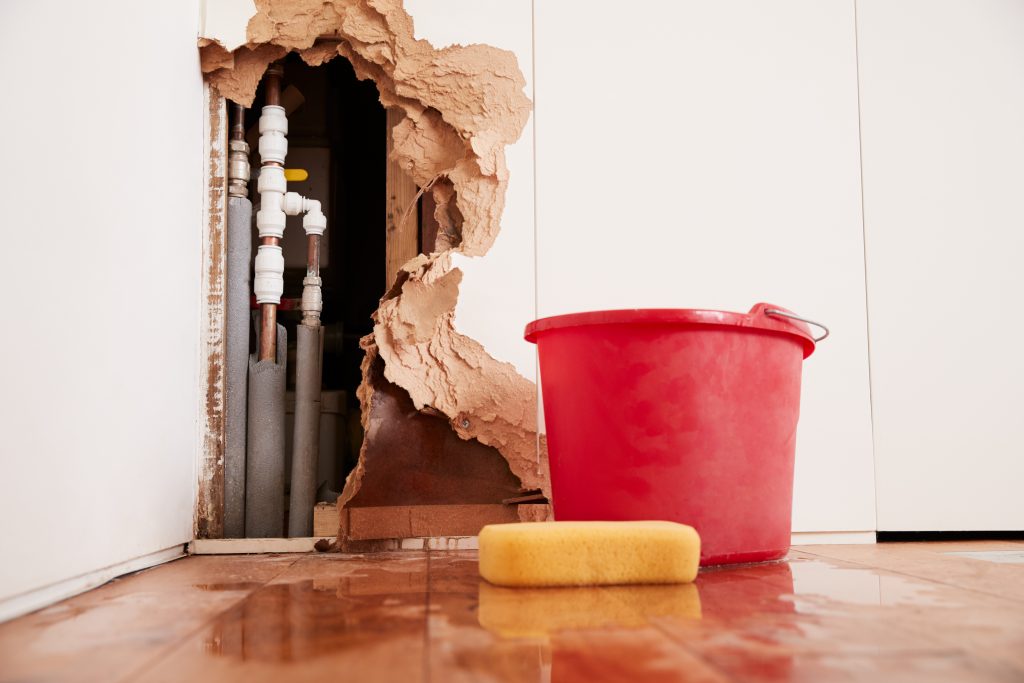6 Ways to Find Concealed Water Leaks in Your Residence
6 Ways to Find Concealed Water Leaks in Your Residence
Blog Article
We've come across this post relating to Locating water leaks directly below on the internet and think it made good sense to share it with you here.

Early detection of dripping water lines can alleviate a possible catastrophe. Apart from conserving you money, it will certainly minimize the aggravation and irritation. The minute you locate a leak, calling your plumber for fixings is the best remedy. Some little water leaks may not be noticeable. Here are some hacks that aid if you can not discover it with your naked eyes.
1. Examine the Water Meter
Examining it is a proven method that aids you uncover leakages. If it moves, that suggests a fast-moving leak. This means you might have a slow-moving leak that can also be below ground.
2. Check Water Consumption
If you find abrupt adjustments, regardless of your intake being the very same, it implies that you have leaks in your plumbing system. An abrupt spike in your bill suggests a fast-moving leakage.
A constant rise every month, also with the same behaviors, shows you have a slow-moving leakage that's likewise gradually rising. Call a plumber to completely examine your residential property, particularly if you really feel a cozy area on your flooring with piping beneath.
3. Do a Food Coloring Examination
When it involves water consumption, 30% comes from bathrooms. Examination to see if they are running effectively. Decrease flecks of food color in the storage tank and also wait 10 minutes. If the color somehow infiltrates your dish during that time without flushing, there's a leak in between the storage tank as well as dish.
4. Asses Outside Lines
Don't neglect to inspect your outdoor water lines too. Needs to water leak out of the link, you have a loose rubber gasket. One tiny leak can waste bunches of water and also increase your water costs.
5. Evaluate and Examine the Situation
Home owners should make it a behavior to check under the sink counters as well as also inside cupboards for any bad odor or mold and mildew growth. These 2 red flags show a leakage so punctual interest is called for. Doing regular examinations, also bi-annually, can conserve you from a major issue.
Inspect for stainings and damaging as many pipelines as well as home appliances have a life expectations. If you think leaking water lines in your plumbing system, don't wait for it to escalate.
Early detection of dripping water lines can mitigate a potential catastrophe. Some tiny water leakages may not be visible. Examining it is a proven method that assists you find leaks. One tiny leakage can waste heaps of water and also spike your water expense.
If you presume leaking water lines in your plumbing system, don't wait for it to intensify.
How to Know If Your Home Has a Hidden Leak
Water Meter Reveals Inexplicable Water Usage
If you’d like to test whether or not there’s a leak somewhere in your home, you can do this using your water meter. Here is how to conduct the test:
Don’t use any water in your home for at least 30 minutes; this also means not turning on faucets or water-using appliances.
Go outside, and check your water meter for activity.
If your water meter shows that there was activity, even though no one was using any water, this proves that there is a leak in your home.Visible Mold or Mildew Growth
Leaks behind walls create moist, dark environments that allow mold and mildew to grow and thrive. Eventually, you might see mold growth forming on the wall closest to a hidden leak.
If mold is growing in an area that receives a high amount of moisture, such as a bathroom, it may simply be an indication that better ventilation is needed. However, if you see mold growth on a wall or the ceiling in an area where you would not expect, you probably have a hidden leak.
Musty, Mildew Odor
Sometimes you might not be able to see the mold or mildew that is growing as a result of a leak. However, the smell can give the problem away just as easily. If you catch a whiff of something musty, there’s a good chance that old water is collecting somewhere in your home that you can’t see.
Stained/Warped Walls, Ceilings, or Floors
When your home soaks up water, a variety of red flags can become visible, including ceiling stains, bubbling drywall, warped walls, and sagging floors. While these issues can be caused by excess humidity, they can also be signs that a pipe or plumbing connection has started leaking behind your walls.
Inexplicably High Water Bill
After a while, you get a general sense for what your water bill should be. If you own a pool or sprinkler system, your bill will tend to be higher during summer. However, if you receive a water bill that seems especially high, and you can’t figure out what caused it, then you may have a hidden leak somewhere that’s increasing your bill.
https://www.plumbingjoint.com/blog/2019/july/how-to-know-if-your-home-has-a-hidden-leak/

As an enthusiastic reader on Locating water leaks, I was thinking sharing that blog post was essential. Sharing is good. One never knows, you might be helping someone out. We take joy in reading our article about Locating water leaks.
Report this page